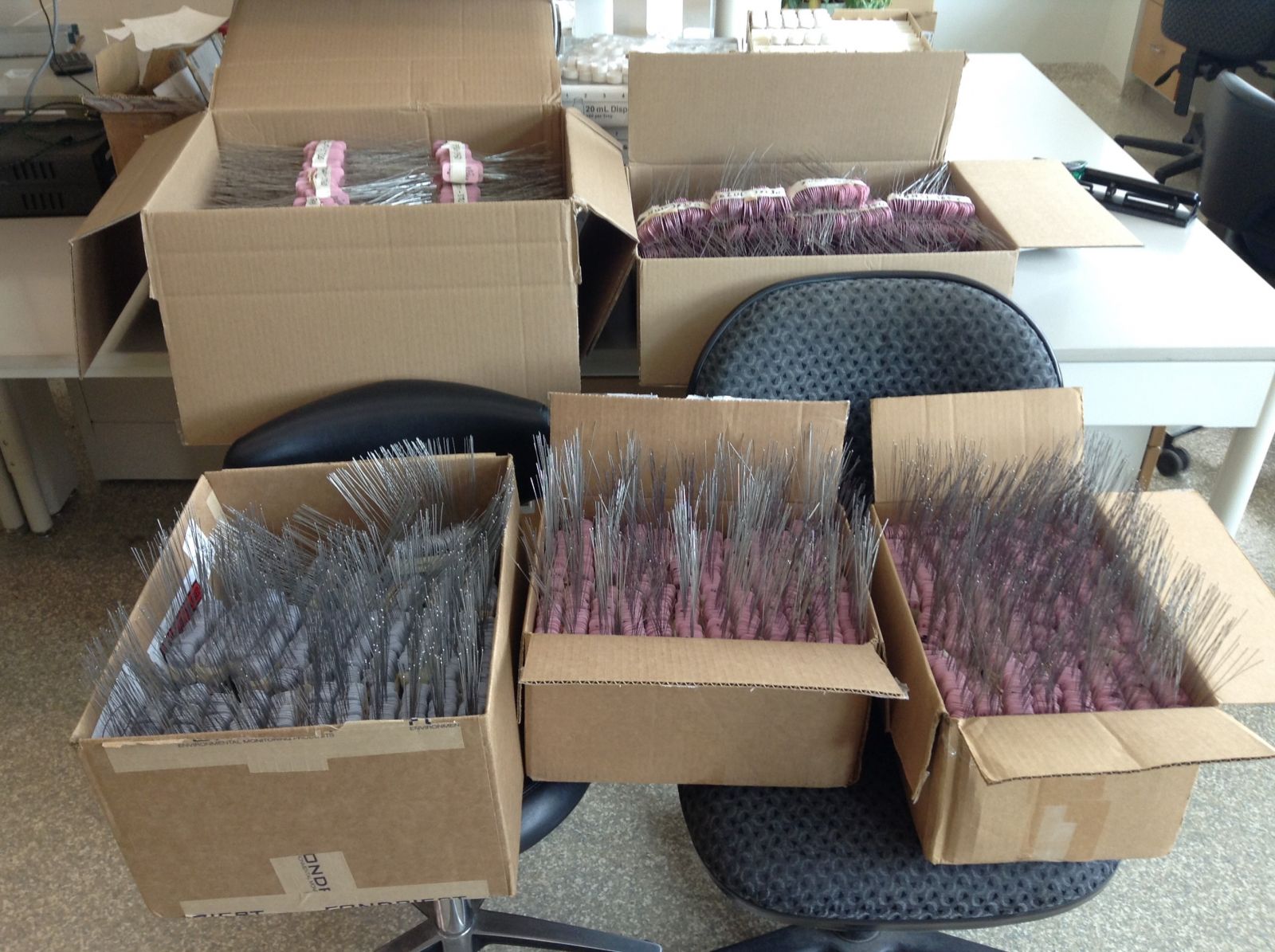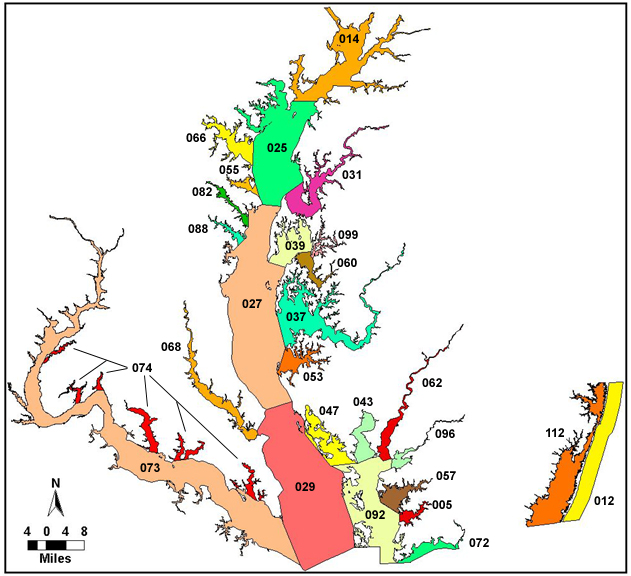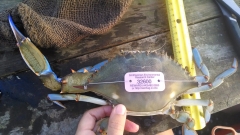Knauss legislative fellowships in Congress help build careers — and they're fun and educational. See our video and fact sheet for details.
Blue Crab Tagging Research Requires Early Mornings and Helpful Citizens
Recently the Fish and Invertebrate Ecology Lab (a.k.a. "The Crab-Lab") at the Smithsonian Environmental Research Center (SERC) finished the majority of its preparations for its two upcoming crab-tagging experiments this summer. The first of these two experiments will be the primary focus of my master’s degree research. In these “mark-recapture” studies, easily identifiable markings are placed on the animal of choice and it is released in the wild. Then this population can be surveyed again in a number of ways to gather info on animals that are recaptured. Mark-recapture studies can allow us to discover valuable information on sizes of populations, their migration patterns, and any interactions they may have with people who spot or recapture them. For my study in particular, our concern is these interactions and how we can use them to understand the extent of recreational and commercial fishing in the Chesapeake Bay and its tributaries.
Not only is the public’s participation in this work encouraged, it’s critical to our success. By calling the phone number listed on these tags, any fisher that catches a tagged crab can report to us where they caught it, what kind of gear they used, and whether they fish recreationally or commercially. Only if a great proportion of the people who catch these crabs report them can we have the finely detailed data we need to aid in managing this fishery. So, if you catch one -- please report it online or call it in and you’ll receive a reward.
 |
| Over six thousand plastic tags, wired and ready to travel all around the Chesapeake Bay on the backs of blue crabs. Photo credit: Robert Semmler |
Additionally, our research relies on working with local watermen to catch large amounts of crabs for us. By following these watermen as they fish their trotlines, or by doing the tagging directly on their boats, we are able to tag the crabs as soon as they are on board. This helps to ensure that the crabs are returned to the water in a healthy state.
Though it may seem secondary to the tagging itself, there are a lot of critically important preparations that must be made before the other Crab-Lab researchers and I can start putting tags on crabs. First we have to call up local watermen at various sites to fish for us for the day, reserve boats, arrange travel time for when our tagging crew will be at far-away sites, and last but not least, prepare over 8,500 wired plastic tags.
I'm truly excited to see these prep stages coming to a close as it means we can start the summer field season and begin asking some very intriguing questions. This summer for my project, nearly 6,000 crabs will be tagged throughout 15 of the 25 different harvest reporting areas in the Maryland waters of the Chesapeake Bay. Tagging is not possible in the ten other areas because of budgetary constraints.
 |
| Map indicating the twenty-five different harvest reporting areas of Maryland’s waters. Photo credit: Maryland DNR |
When tagged crabs are recaptured by local fishers, they will be prompted to report the tags for their reward either online or by our 24/7 phone hotline. With the information called in by these fishers about where and when they caught these crabs, we will be able to get an idea of the distribution of recreational harvest throughout the Bay to see in what locations the Bay’s blue crab population may be most greatly affected by this fishing. This information will then be submitted to the Chesapeake Bay Stock Assessment Committee for their consideration and use in existing population models for their advisory report to be issued in the summer of 2016. This will help to generate a more accurate prediction of the level of sustainable harvest pressure each year.
We planned to start this summer-long investigation by traveling to the Eastern Shore and tagging at our first two sites, the Little Choptank River and the Honga River. Although going out on the water when the local watermen want to start fishing will mean plenty of early mornings (departing the dock as early as 3:30 a.m.), I’m very excited for what this field season will bring and what we can all learn from it.
Photo, top left: A tag is placed on a blue crab. Credit: Julie Sepanik.
See all posts to the Fellowship Experiences blog




